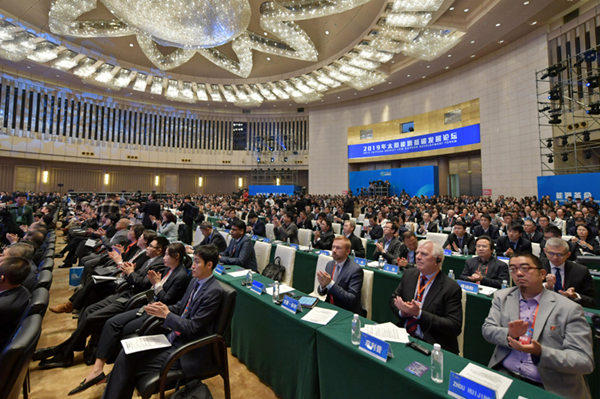
The 2019 Taiyuan Energy Low Carbon Development Forum opens on Oct 22 in Taiyuan, North China's Shanxi province. [Photo/Xinhua]
TAIYUAN — From wood to coal and then to wind, a collection of pictures and models recounting the evolution of energy sources were on display at an exhibition area spanning 36,000 square meters in Taiyuan, capital of northern China's Shanxi province.
The exhibition marked the opening of the 2019 Taiyuan Energy Low Carbon Development Forum in the coal-rich province on Oct 22, which attracted a number of participants from 22 countries and regions including the United Kingdom, the United States, and Germany.
Themed "Energy revolution, International cooperation", the three-day forum is expected to gather global strength to work towards international energy cooperation and global climate governance.
Bohuslav Sobotka, former prime minister of the Czech Republic, praised China for taking joint responsibility for global climate governance and for its tremendous efforts to implement greenhouse gas emission reduction plans.
"It is also right for China to gradually restrict coal mining. It is laudable as well that China's employment in green energy has reached 43 percent," said Sobotka.
China has committed to reducing the carbon intensity of its economy by 60 percent to 65 percent by 2030, compared with the 2005 level, and increasing non-fossil fuel energy to 20 percent of its primary energy consumption by the same date.
As of 2017, China's carbon dioxide emissions per unit of GDP has decreased by 46 percent compared with 2005, according to Xie Zhenhua, China's special representative for climate change affairs. China has also cut 810 million metric tons of outdated coal capacity in the past five years.
DECREASING COAL CONSUMPTION
In the city of Datong, hundreds of thousands of black photovoltaic panels spread at the top of mountains. Known as China's "capital of coal", the city is now taking a transition path towards renewable energy development.
In 2016, Datong established the world's first panda-shaped photovoltaic power station consisting of 170,000 photovoltaic panels. With an installed capacity of 100 megawatts, it is expected to generate 1.8 billion kwh of solar-powered electricity in 25 years, reducing 1.34 million tons of carbon dioxide emissions.
Datong's move is an epitome of China's efforts to push forward clean energy development.
"China continued to lead the global clean energy development last year, adding over 20 gigawatts of wind power and more than 40 gigawatts of solar photovoltaic power," said Liu Zhenmin, UN under-secretary-general for economic and social affairs, at the opening ceremony of the forum.
China's increasing environment-friendly development measures are not only reshaping its energy structure.
Zhang Zhongzhong, a villager from Zhaojiazhuang village in the city of Huozhou, said there were no longer smoke and dust in his tofu workshop after he replaced his decades-old coal stove with a gas-fuel stove two years ago.
Zhang is among the 58 tofu workshops in the city that have replaced coal-burning stoves with gas-burning ones, each receiving 20,000 yuan ($2,800) of subsidies from the local government.
"A stove will burn several tons of coal a month. Although the cost of gas is a little bit higher, the workshop is cleaner," Zhang said.
According to the National Bureau of Statistics, the share of coal in China's total energy consumption dropped by 13.4 percentage points in 2018 compared with 2005.
In 2018, the average number of good days increased to 79.3 percent in 338 Chinese cities, up 2.6 percentage points from 2015.
"In our ever more interconnected world, energy transition is a global and inter-generational process. We need to think, learn and grow together the sunrise industries of the future," said Alan Searl, China Cooperation Program manager, International Energy Agency.

Visitors watch a promotional video about the 2019 energy revolution in Taiyuan, North China's Shanxi province, Oct 22. [Photo/Xinhua]
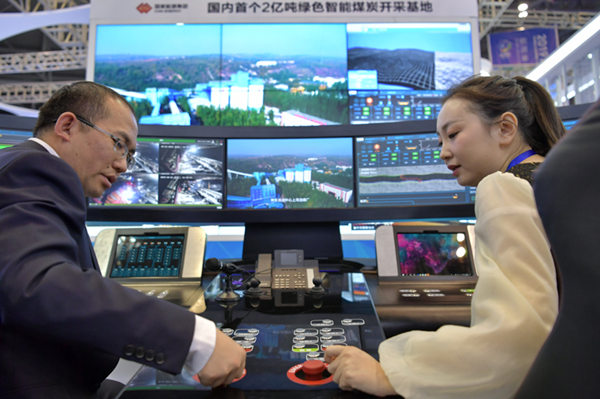
A visitor checks out a smart green coal-mining system at the 2019 energy revolution exhibition on Oct 22 in Taiyuan, North China's Shanxi province. [Photo/Xinhua]
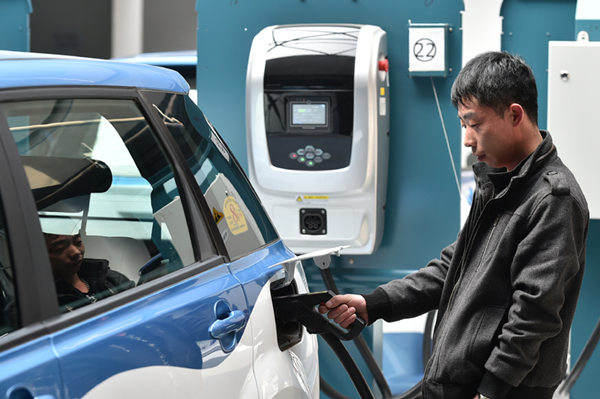
A taxi driver charges his new-energy vehicle in Taiyuan, North China's Shanxi province. [Photo/Xinhua]

A wheel-type patrolling robot at the 2019 energy revolution exhibition in Taiyuan, North China's Shanxi province, on Oct 22. [Photo/Xinhua]
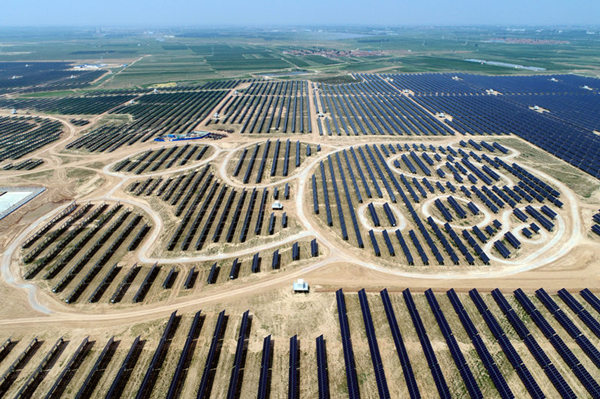
A drone photo from 2017 shows a panda-shaped photovoltaic power station in Yunzhou district of Datong city, North China's Shanxi province. [Photo/Xinhua]
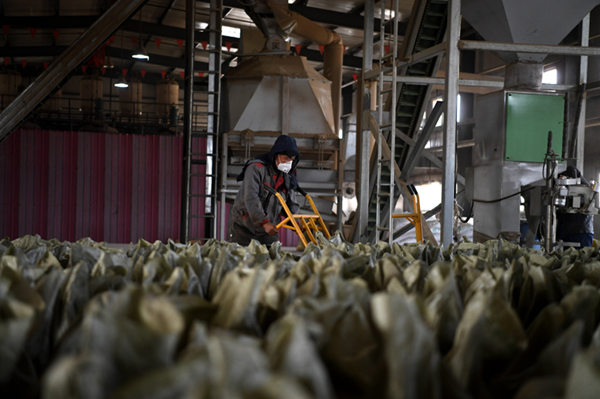
In 2018, workers at the Dechengtongda science and technology development company transport biological fuels extracted from straw in Hunyuan town of Datong city, North China's Shanxi province. [Photo/Xinhua]
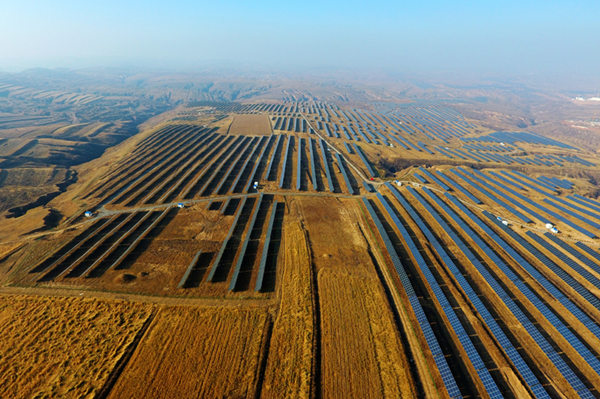
A drone photo from 2016 shows part of a 100,000-kilowatt project of the Datong Jingneng new energy company, a national advanced technological photovoltaic demonstration project at a coal mining subsidence zone in Datong city, North China's Shanxi province. [Photo/Xinhua]
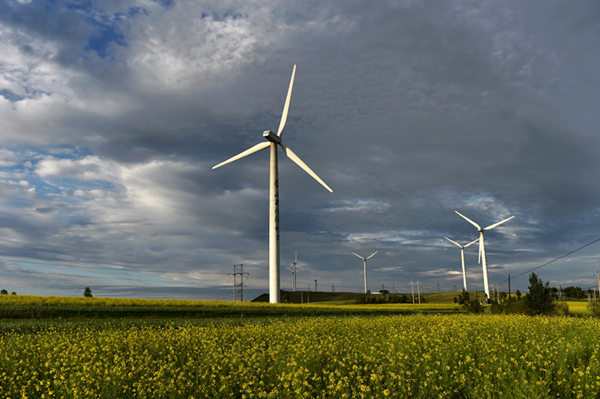
In 2017, a wind turbine generator system at the Xiaowutai Wind Power Plant in Youyu town, North China's Shanxi province. [Photo/Xinhua]